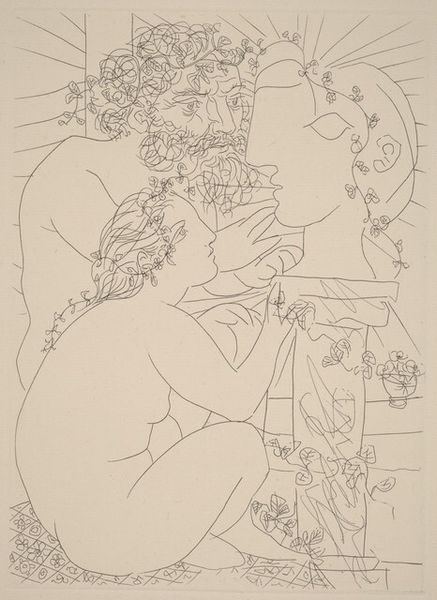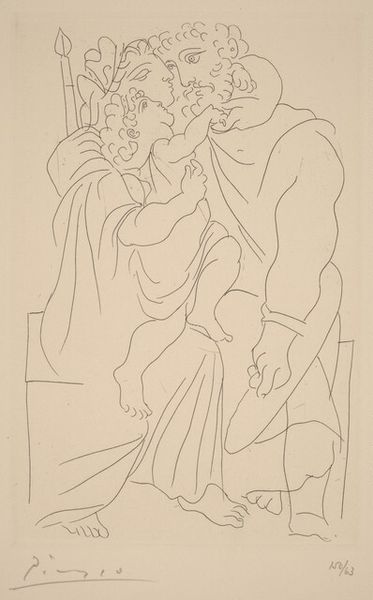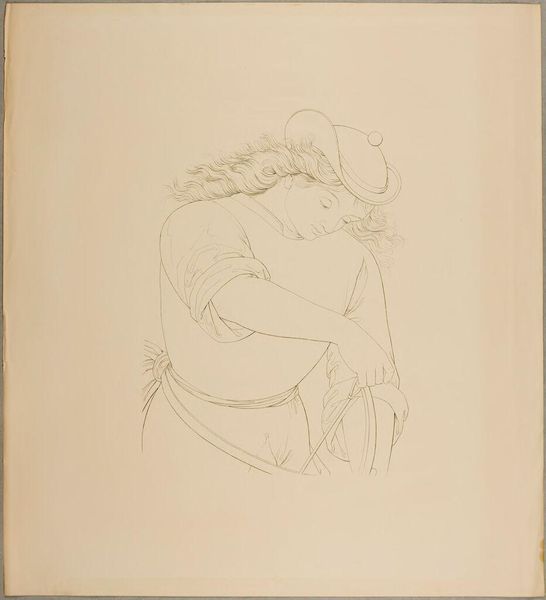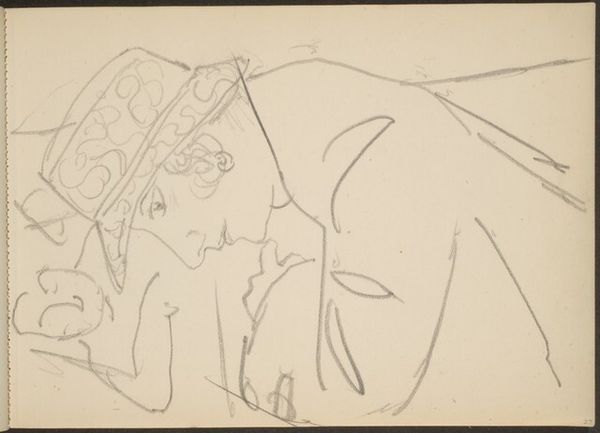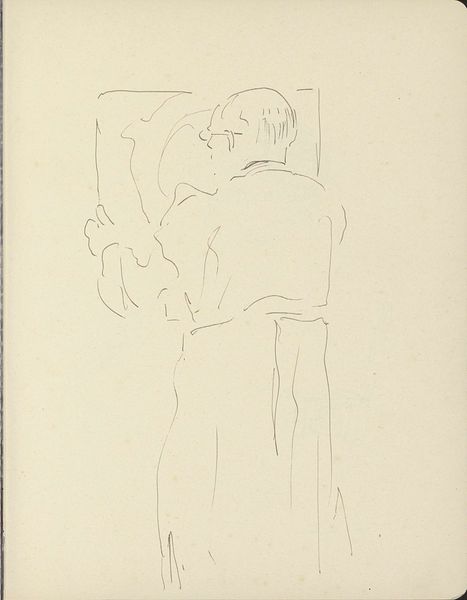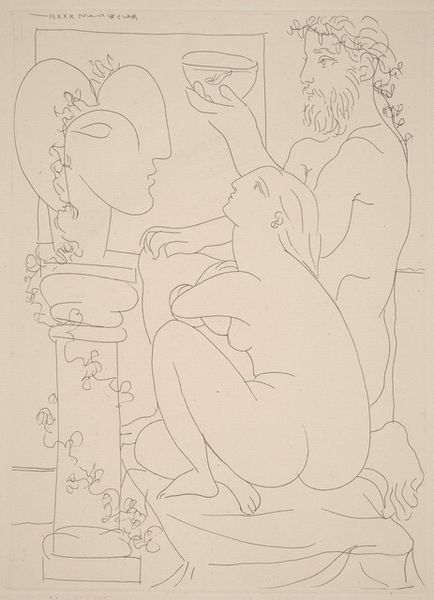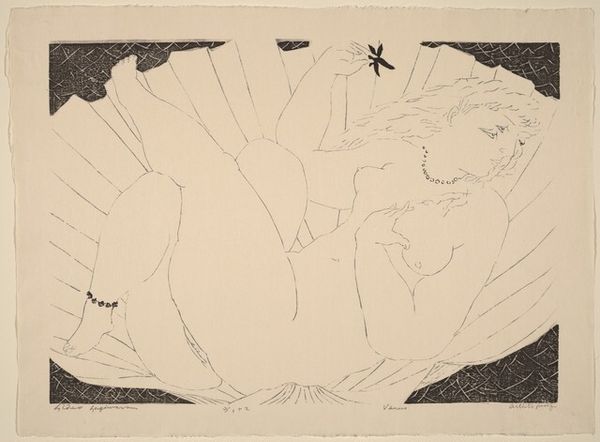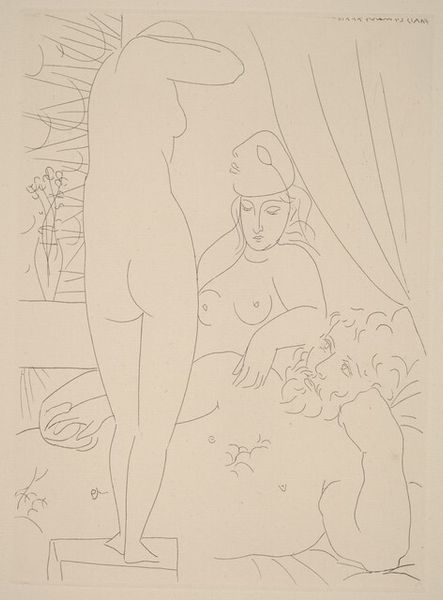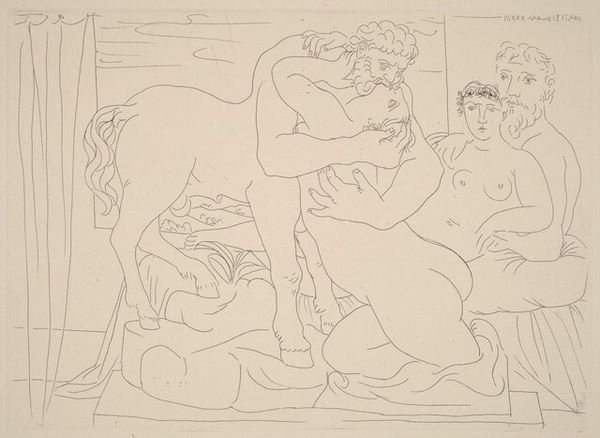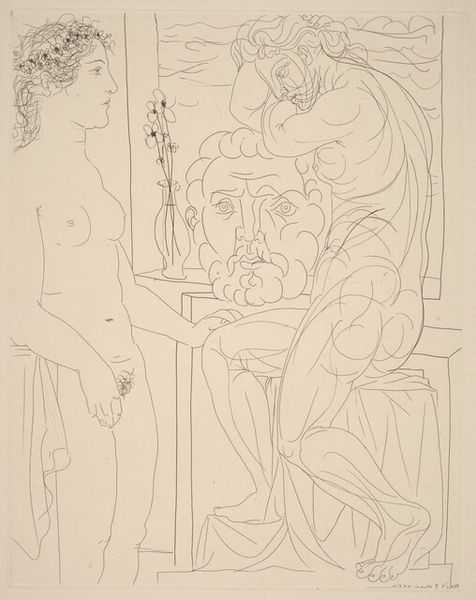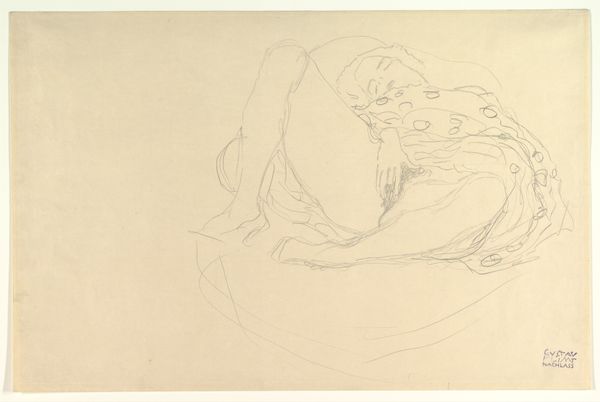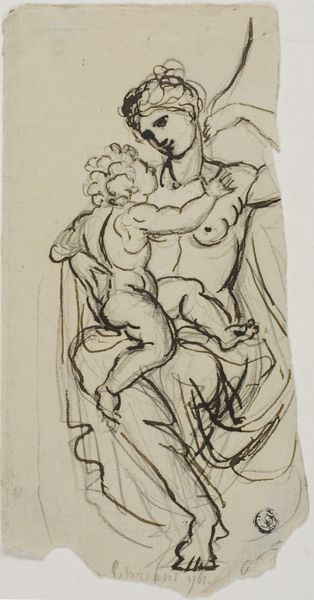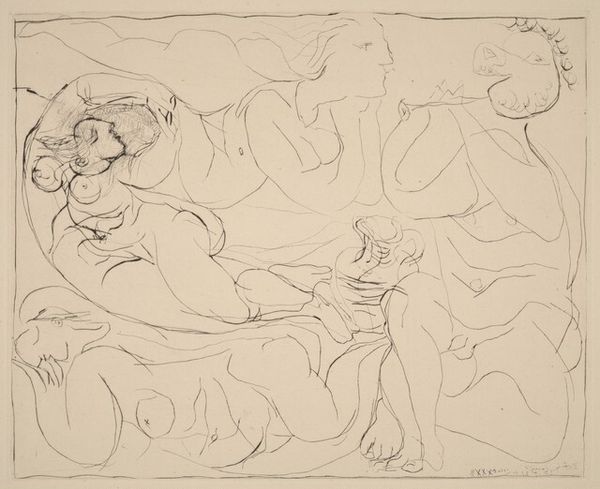
drawing, print, etching
#
drawing
# print
#
etching
#
caricature
#
caricature
#
figuration
#
line
#
history-painting
#
erotic-art
Copyright: National Gallery of Art: CC0 1.0
Curator: Up next, we have Picasso’s 1934 etching, "Kinesias and Myrrhine." What are your initial thoughts? Editor: It's intriguing how much raw emotion is conveyed with so few lines. The sketch-like quality adds a certain immediacy to the image, almost as if we are intruding on a private moment. Curator: Indeed. Look at the economy of line—how he manages to define form and space through simple contours and cross-hatching. The interplay of positive and negative space is crucial. Notice the background emerging only through implication, not direct rendering. Editor: The title brings to mind the Greek comedy *Lysistrata*, in which the women go on a sex strike to end the Peloponnesian War. I see those power dynamics—the female figure’s seeming indifference above the pleading male. There is history, myth, and commentary interwoven here. Curator: Precisely. The influence of classical imagery is apparent in the stylized figures and drapery. It serves as a foundation on which Picasso explores psychological tension. He utilizes line to suggest rather than define, opening space for multiple interpretations. Editor: The line work almost caricatures the classical form—deflating the idealized beauty typically associated with that era. In doing so, he injects modern psychological realism. It’s a very human scene of desire, persuasion, even frustration, across the ages. Curator: He achieves such fluidity and movement with seemingly minimal effort. Look how the draped clothing cascades to guide our eyes from one focal point to another. Notice also, where the line disappears altogether, leaving it up to our minds to complete the form. Editor: And the contrast between the active figures and that almost vacant female visage. Does it portray feminine indifference, or a woman’s understanding of her own power in this ancient drama? I find her expression rather haunting. Curator: A compelling point. Picasso manages to collapse centuries, layering the classical with his modern aesthetic. The composition achieves both timelessness and the fleeting qualities of the present moment. Editor: I will walk away with a renewed fascination for the use of seemingly simple sketches in depicting complex relationship dynamics and psychological landscapes. Curator: For me, I will consider the way that line alone can carve space and light and imply form as powerful as any full composition might.
Comments
No comments
Be the first to comment and join the conversation on the ultimate creative platform.
